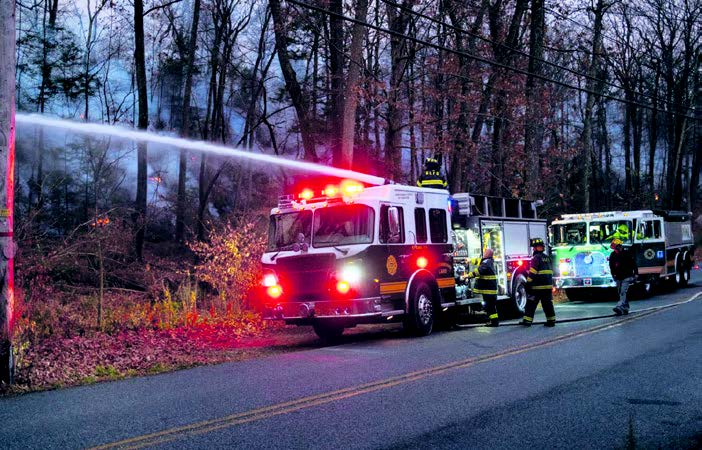
By Andy Newman and Mark Bonamo
A wildfire ravaging a large expanse of mountainous forest along the New York-New Jersey border persisted in its growth earlier this week, even after the first substantial rainfall in nearly six weeks, according to fire officials. The region is anticipating bone-dry conditions accompanied by gusts reaching up to 40 mph on Tuesday, increasing the possibility that the fire will further expand.
As of Monday night, over 3,500 acres were ablaze in New Jersey and New York, with expectations that the fire would exceed 5,000 acres, reported a spokesperson for the New Jersey Department of Environmental Protection.
Approximately 20% of the New Jersey segment of the fire has been contained, according to the state’s Forest Fire Service. It remains uncertain how much of the New York section has been controlled.
The rainfall that occurred Sunday night, totaling a mere quarter of an inch in the region, only provided a temporary respite to the fire’s advancement, stated Christopher Franek, an assistant division fire warden for the Forest Fire Service.
“We’re utilizing every resource available,” he remarked. “A lot of manual effort is being hindered by smoke and dust.” Five thousand acres is nearly 8 square miles — roughly one-third the size of Manhattan.
Hundreds of firefighters from numerous fire departments in both states are tackling the inferno in a harsh area of Passaic County, New Jersey, and Orange County, New York, near the Appalachian Trail.
“Everything is chaotic at present,” said Franek, who noted he had been awake for over two days continuously. “Accessing the fire has posed significant challenges.”
The fire, which ignited Friday, tragically claimed the life of an 18-year-old New York state parks worker over the weekend when a tree fell on him. Though no evacuation orders have been issued, officials reported that around 10 structures are at risk in New Jersey.
The Jennings Creek fire is among hundreds that have erupted in New Jersey, New York, and Connecticut throughout a period of unprecedented drought. As mid-November approaches, trees enveloped in dead, dry autumn foliage have transformed into towering kindling.
Jay Engle, a meteorologist with the National Weather Service monitoring New York City and its surroundings, asserted that little has changed in the fire risk outlook.
“We received a slight wetting rainfall, but as we head into tomorrow, conditions will dry out once more,” he commented. Humidity levels as low as 35% are expected in the area on Tuesday, with minimal chances of precipitation for the upcoming week.
“If we were to receive an inch of rain, it could significantly reduce our concerns,” Engle acknowledged, “but regrettably, we see no relief on the horizon.”
The fires enveloped a large portion of the New York City metropolitan area in thick smoke over the weekend. The air quality saw some improvement on Monday, with the State Department of Environmental Conservation reporting the city’s pollution levels as “moderate.”
In New Jersey, the Forest Fire Service has responded to over 500 fires since early October, more than tenfold the number of incidents that the agency managed during the same timeframe last year.
In Connecticut, officials have been monitoring 82 fires, including over a dozen that have ignited in recent days.
